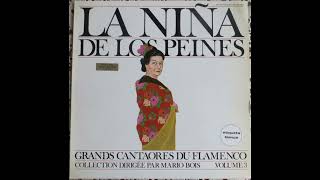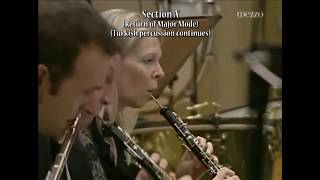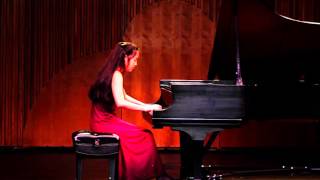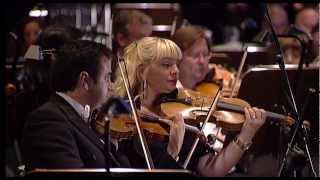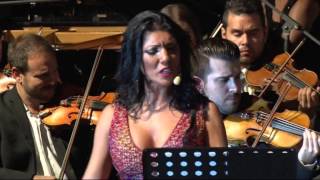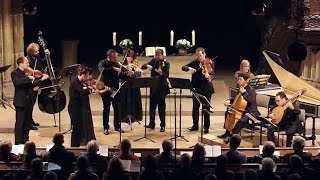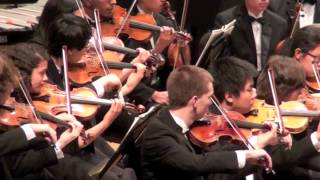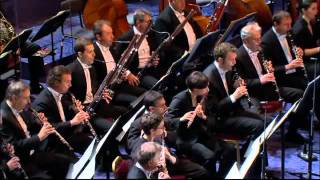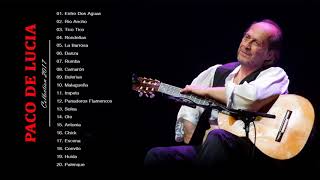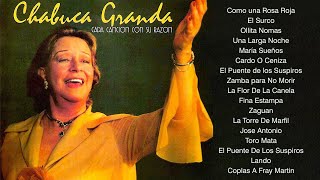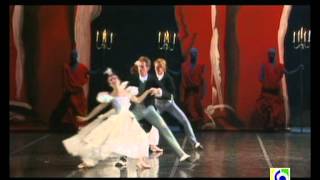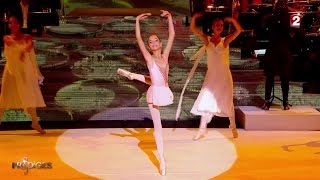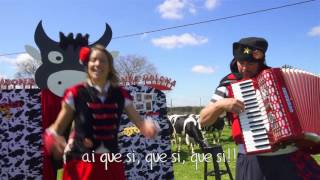On November 16, International Flamenco Day is commemorated.
Recommended music videos for initiation to classical music
Flamenco is a musical expression typical of Andalusia and some of the neighboring regions such as Extremadura and Murcia . Its origin seems to be due to a mixture of Andalusian popular culture with the expressions of the gypsy people, as well as details of Castilian romances, Moorish music and Sephardic songs. We can say that in the 18th century flamenco was already performed, however, it has evolved to this day and continues to do so like any living being. Its three main facets are singing (the action of singing that the cantaor or cantaora develops), playing (typical of guitar players with their special technique) and dancing (characteristic of dancers). ), all of them with their own traditions and norms.
Flamenco singing has different varieties (more than 50), which are called palos , with their own and differentiated harmonic and rhythmic structures. Of them, perhaps the oldest is the fandango and, within them, the best known are the fandangos of Huelva and the fandangos of Málaga ; There are also the soleá or soleares (perhaps the most purist), the bulerías (party song par excellence), alegrías (living up to its name), the tangos (typical of joyful celebrations), the seguiriyas (sad and profound), sevillanas (the most well-known and popular), peteneras, granaínas, saetas, martinetes, tientos, rumbas, cantiñas, etc, etc, etc. Clapping is used as a rhythmic accompaniment to flamenco singing and dancing, accentuating the beginning or end of the musical phrase.
The Girl with the Combs. Pastora María Pavón Cruz (Seville, 1890-1969) was a gypsy flamenco singer considered one of the most important voices in the history of this art. He was born in a gypsy cradle; His father was the singer Francisco Pavón Cruz , known as " El Paiti " and his mother was Pastora Cruz Vargas and his two brothers, Tomás Pavón and Arturo Pavón , also singers. At the age of eight he made his first public performance; In 1901 she debuted in Madrid, at the Café del Brillante , where she met Ignacio Zuloaga , who convinced her to perform in Bilbao at the Café de las Columnas . She began to be known as La Niña de los Peines because of some tangos she frequently performed. “Comb your hair with my combs, because my combs are made of sugar; He who combs his hair with my combs even sucks his fingers... “
The Austrian composer Joseph Haydn (1732-1809), whose brother Michael Haydn was also a notable composer, was one of the main pillars on which classicism (1750-1820) was based. At the age of six he began his musical studies of harpsichord and violin. At the age of eight he was admitted as a choralist at St. Stephen's Cathedral in Vienna where he continued his studies in singing, piano and violin. After changing his voice, he had to survive by working multiple jobs, while studying composition analyzing the works of Carl Philipp Emanuel Bach . He maintained a close friendship with Mozart and was Beethoven 's teacher. He laid the main foundations of the sonata form and the formal structure of the string quartet and the symphony. He died at the age of 77 in Vienna .
Haydn 's Symphony No. 100 , popularly known as the Military Symphony , is the eighth in the series of twelve symphonies titled the London Symphonies . The symphony is structured in Haydn 's four usual movements, of which today we offer the second ; It is precisely this movement that justifies its subtitle of Military Symphony with striking fanfares for trumpets and percussion effects (which will also appear at the end of the fourth movement). One critic wrote after the premiere that the second movement evoked the "infernal murmur of war increased to a climax of horrible solemnity!" Today we will watch it in the Warsaw National Philharmonic version conducted by the Latvian maestro Mariss Jansons .
Alfredo Casella (1883-1947) was an Italian composer, pianist and conductor, born in Turin into a family full of musicians. Alfredo entered the Paris Conservatory in 1896 to study piano with Louis Diémer and composition with Gabriel Fauré ; in these classes, Lazare Lévy, George Enescu and Maurice Ravel were among his fellow students. Casella developed a deep admiration for Debussy's output; but he pursued a more romantic vein (derived from Strauss and Mahler ). He identified for many years with the fascist regime in Italy , only to find himself in conflict with it as his wife was Jewish of French origin. Beginning in 1943, he lived in constant fear of being separated from his wife and daughter, who were subject to arrest and deportation.
The chaconne or ciaccona , judging by Spanish literature and works from the late 16th century , is included in Spanish popular dances, with ternary meter, moderate tempo and continuous variation of the upper voices over low ostinato. In the 17th century it spread throughout Europe through Spain (although there are defenders of its Latin American origin). It originally appeared in guitar collections with common chord/bass patterns. It is originally a festive, lively dance of great eroticism.
Today we present the Variations on a Chaconne by Alfredo Casella performed by K atherine Lee .
Basil Poledouris (1945-2006) was a film music composer born in the USA to a Greek family. Born in Kansas City , Missouri, he had two influences that led him towards music: the first was the Hungarian composer Miklós Rózsa and the second was his Greek Orthodox ancestry. Poledouris grew up in church, and often sat in services captivated by the sounds of the choir. He began taking piano lessons when he was 7 years old and eventually enrolled at the University of Southern California to study film and music. He gained renown thanks to his powerful epic style of songwriting, achieving numerous hits with the bands The Blue Lagoon , Conan the Barbarian, Conan the Destroyer , Red Dawn , RoboCop , The Hunt for Red October , Free Willy , Starship Troopers and Between the love and play.
Conan the Barbarian is an American sword and sorcery film written and directed by John Milius with music by Poledouris and released in 1982. The film tells the story of a barbarian named Conan who seeks revenge for the death of his parents. at the hands of Thulsa Doom , the leader of a snake-worshipping cult. The story is based on the stories of Robert E. Howard , about the eponymous character and the world of sword and sorcery in which he lived. The leading roles are played by Arnold Schwarzenegger and James Earl Jones . Its soundtrack is considered by many to be one of the best examples of film music ever written.
Recommended classical music videos
Manuel de Falla (1876-1946), born in Cádiz , was one of the most famous Spanish composers of the last century. Since he was a child he studied piano with his mother, while his nurse sang him songs that he would remember all his life. In 1901 he met Felipe Pedrell , who awakened his interest in flamenco. In 1899 he completed his official studies at the Madrid Conservatory. obtaining the first prize for piano from said center. A few years later he moved to Paris ; However, after the start of the First World War , he had to return to Madrid , and after the death of his parents, he decided to move to his sister's house in Granada ; There he met Federico García Lorca . On September 28, 1939, shortly after the Civil War , he went into exile in Argentina , where he died.
El amor brujo is a ballet work with cante jondo with 13 scenes, considered one of the most relevant works of Spanish music. The plot is summarized in: a gypsy in love and not very well reciprocated uses her arts of magic, sorcery or witchcraft, whatever you want to call it, to soften the heart of the ungrateful; and he achieves it, after a night of incantations, spells, mysterious recitations and more or less ritual dances, at the hour of dawn when the dawn awakens the love that, ignoring itself, was dozing, when the bells exaltedly proclaim its triumph. .
Today we offer the work in concert version performed by the singer and dancer Joana Jiménez Jumilla (1977) accompanied by the UCAM Symphony Orchestra under the baton of maestro Alejandro Curzio Candelas .
Georg Philipp Telemann (1681-1767) was a German Baroque composer, considered the most prolific in history with more than 800 credited works. At the age of twelve he began to compose against the will of his mother, who did not see a peaceful future in a musical career. He learned to play, without outside help, countless instruments, while on his frequent travels he became familiar with different styles of composition. After spending a few years in different positions in Leipzig , Żary (Sorau in German) and Eisenach , in 1721 he was appointed musical director of the five largest churches in Hamburg , where he would spend the last 47 years of his life. He wrote abundant chamber music, symphonic and concert music, motets, psalms, cantatas, oratorios and more than 40 operas.
Les Nations is a suite written for string orchestra and basso continuo and articulated in eight movements: I (0´00´´) Ouverture .-. II (7´15´´) Menuet I .-. III (11´25´´) Les Turcs .-. IV (14'20'') Les Suisses .-. V (16'19'') Les Moscovites .-. VI (18'33'') Les Portugais .-. VII (21'16'') Les Boiteux .-. VIII (22'30'') Les Coureurs. Today it is offered to us by the Bremer Barockorchester conducted by its concertmaster Stéphanie Paulet .
Gabriel Pierné , (1863-1937), was a French organist, composer and conductor; The son of a piano teacher and a singing teacher, he entered the Paris Conservatory , where he sang with César Franck and Jules Massenet . In 1890, upon the death of César Franck , he replaced his teacher on the organist platform of the Church of Saint Clotilde . As an orchestra conductor he achieved a great reputation and as a composer, he left abundant chamber music for solo and accompanied piano, as well as beautiful symphonic pages, among which those dedicated to the Basque Country such as the incidental music of Ramuntxo or the Fantaisie basque for violin and orchestra; Also notable are his oratorios, his symphonic poems and his numerous comic operettas, as well as his ballet works.
Ramuntcho is incidental music written by Gabriel Pierné in 1908 for a stage version of Pierre Loti 's 1897 novel Ramuntcho , which was performed at the Théâtre de l'Odéon in Paris . In 1910, Pierné arranged the music in two orchestral suites from which today we offer his Overture , or rhapsody of Basque themes. Although the composition of the original work reaches melancholic sensations in many moments, like Basque music in general, in this multicolored overture that sensation is enriched by happy popular dance rhythms, one of whose protagonists is the quintuple rhythm (5/8) of the zortziko .
Today we can see it thanks to the Cincinnati Symphony Youth Orchestra conducted by maestro William C. White .
Olivier Messiaen (1908-1992) was a French composer, organist, pedagogue and ornithologist, one of the most outstanding musicians of the entire century. Both his fascination with Hinduism, his admiration for nature and birds, his deep Christian faith and his love for instrumental color were essential to his formation as a person and artist. He entered the Paris Conservatory at the age of 11, and had Paul Dukas, Marcel Dupré, Maurice Emmanuel and Charles-Marie Widor as teachers. He was appointed organist at the Church of the Holy Trinity in Paris in 1931, a position he held until his death. In 1941 he was appointed professor of harmony and in 1966, professor of composition at the Paris Conservatory , a position he held until his retirement in 1978.
Et exspecto resurreccionem mortuorum (And I wait for the resurrection of the dead) is a suite for wind orchestra and percussion instruments by Olivier Messiaen , dedicated to the dead of the First and Second World Wars. Messiaen was approached in October 1963 by André Malraux , Charles de Gaulle 's Minister of Cultural Affairs, with the commission of a sacred work to commemorate the dead of the two world wars.
The title is taken from the penultimate line of the Nicene Creed and the work is articulated in five movements: I (0´12´´) Des profondeurs de l'abîme, je crie vers toi, Seigneur: Seigneur, écoute ma voix! .-. II (5´33´´) Le Christ, resurrected des morts, ne meurt plus; la mort n'a plus sur lui d'empire .-. III (12´20´´) L'heure vent où les morts entendront la voix du Fils de Dieu .-. IV (18´25´´) Ils ressusciteront, glorieux, avec un nom nouveau -- dans le concert joyeux des étoiles et les aclamations des fils du ciel .-. V (25´55´´) Et j'entendis la voix d'une foule immense..."
The interpretation is offered to us by the Radio France Philharmonic conducted by the South Korean maestro Myung-Whun Chung .
Recommended music videos for all tastes
Paco de Lucía (1947-2014) was an Andalusian guitarist considered the best flamenco guitarist of all time. He began his musical education with his father, also a guitarist, and soon took contact and influences from Niño Ricardo and Sabicas . With his brother Pepe he was part of the group Los Chiquitos de Algeciras ; He later collaborated with Fosforito and El Lebrijano . As time went by, he began to come into contact with new styles and collaborate with different artists of ethnic music, jazz, bossa nova, and even classical music ; The reform of flamenco began while involving artists of the stature of Tomatito and Camarón de la Isla in the work. He recorded 38 albums, made successful tours through Europe, America and Japan and received numerous important awards.
Louis Armstrong (1901-1971), also known as Satchmo or Pops , was an American jazz trumpeter and singer. He is one of the most charismatic and innovative figures in the history of jazz and, probably, its most popular musician. Thanks to his musical skills and his brilliant personality, he transformed jazz from its initial status as dance music into a popular art form. Although at the beginning of his career he established his fame primarily as a trumpet player, later it would be his status as a vocalist that would establish him as an internationally recognized figure with enormous influence on jazz singing.
Iggy Azalea (Amethyst Amelia Kelly 1990) is an Australian rapper, songwriter and model. Due to being bullied at school, she dropped out of high school at the age of fourteen. Before turning 16, he traveled to the USA in search of opportunities for his career as a hip hop singer. Her stage name is a mix of the name of her childhood pet dog, Iggy , and the main street of the neighborhood where she grew up, Azalea Street . He rose to fame in 2014 with the release of his first studio album titled The New Classic , which reached third position on the Billboard 200 and was certified platinum. Among her recognitions, she has been a winner at the American Music Awards and the Teen Choice Awards on two occasions. Likewise, he has received multiple nominations for the Grammy Awards .
Chabuca Granda (1920-1983) was a Peruvian singer-songwriter who composed numerous songs of Creole and Afro-Peruvian music. He collaborated with famous Peruvian musicians and performed throughout Latin America with songs such as La flor de la canela, Fina estampa, and others that earned him international recognition. He has influenced important Peruvian singers such as Juan Diego and his songs have been performed by important performers such as María Dolores Pradera , Joaquín Sabina , or Julio Iglesias . In 2017 his musical legacy was declared Cultural Heritage of the Nation .
Recommended peculiar videos
Flamenco dance . Flamenco is an art originating in Andalusia that combines several elements such as dancing, singing and the guitar. The result of the gypsy, Arab, Christian and Jewish cultural mix, flamenco is, today, an art recognized as Intangible Cultural Heritage of Humanity by UNESCO since 2010. The strong emotional charge that the artists put on stage during their performances and the atmosphere created in a tablao, make seeing a live flamenco show a highly recommended experience. The male and female dancers perform each piece with arm movements, body movements and 'zapateos' according to each flamenco style , accompanied by the melody of the guitar and the deep voice of the singer. (Extracted from El Palacio Andaluz )
Sara Baras (1972) is a flamenco dancer and choreographer born in Cádiz who began her artistic training at the school run by her mother, Concha Baras , in San Fernando . She was part of different companies until in 1988 she formed her own company, Ballet Flamenco Sara Baras, with which she premiered different shows that were awarded valuable awards. From now on she combines performances with her own company with performances as a guest artist in other companies. Among the numerous and precious awards received, we will highlight the National Dance Prize 2003, the Gold Medal of Andalusia 2004 and the British Olivier Award 2020 .
Hector Berlioz (1803-1869) was a French composer, an eminent figure in programmatic music and romanticism in general. He studied in Paris and Rome , where he received a scholarship, focusing on the hymns of his teacher, Jean-François Lesueur , and imitating Beethoven a lot, then unknown in France ; also to Gluck, Mozart, Étienne Méhul and Carl Maria von Weber. In 1844 he composed the first known work for saxophone, the Canto Sagrado sextet, which was premiered under the baton of Berlioz himself and with Adolphe Sax on saxophone. He also wrote several symphonies (among which his best-known work, the Symphonie Fantastique, stands out), overtures, operas, cantatas, sacred music, non-theatrical dramatic works, choral works and numerous songs.
The Fantastic Symphony , op.14, subtitled Episode in the Life of an Artist , considered the first example of programmatic music (music that aims to evoke ideas and images in the mind of the listener, musically representing a scene, image or state of mind). spirit) is inspired by a literary work, which narrates the dreams of a young musician. Articulated in five movements, today we offer the second, A dance : After the rejection of the beloved in the first movement, the reunion with her occurs in a dance. The music then adopts the tempo of a waltz, thus describing the restlessness of the protagonist. The “fixed idea” appears briefly interrupting the waltz, reappearing at the end of the movement
Gabriel Fauré (1845-1924) was a French composer, pedagogue, organist and pianist, considered one of the most outstanding French composers of his generation; His musical style influenced many composers of the 20th century . Among his best-known works are the Pavane, the Requiem , the Nocturnes for piano and the songs Après un rêve and Clair de lune . Among his mentors was Camille Saint-Saëns , who became his lifelong friend. When he achieved success, he held the important positions of organist of the Madeleine church and director of the Paris Conservatory . His legacy has been described as the link between the end of Romanticism and the Modernism of the second quarter of the 20th century .
The Pavane in F sharp minor , op. 50, is a composition for orchestra (and optional choir) by Fauré , written in 1887. With a slow pace, this work evokes the pavane , a 16th century dance that was danced at the Spanish court. The piece is characterized by the elegance of the melody and harmony typical of the French composer. Today we offer it choreographed for the young talent program Prodiges on French Television .
The Pericón is a folk dance typical of Uruguay, Argentina, Chile and Paraguay , danced by a group of couples. Regarding its origin, there are authors such as Carlos Vega who affirm that it evolved from the cielito (evolved contradanza, which comes from the British "country dance" or "original contradanza", which arrived in Argentina around 1730, and in turn is the direct predecessor of all existing contradanzas); while others, such as Cédar Viglietti or Mirta Amarilla Capi , affirm that both the cielito and the pericón have their origin directly in the European contradanza. On the other hand, while some authors, such as Carlos Vega , place its birth in present-day Argentina , others maintain that it would have originated in the lands of present-day Uruguay .
The Malambo is a traditional Argentine folk dance, belonging to the so-called southern or southern music. It was born in the Pampa around the year 1600. Within Argentine folk dances, it is an exception because it lacks lyrics; The music of a legüero drum and the guitars (sometimes, just the drum) accompany this dance performed only by men. There are no rules for performing a tap dance. Each of the combinations of the basic movements is unique and depends on the originality of the gaucho who executes it. The zapateos are separated from each other by a foot strike called "repique" that contains a fast and particular sound that indicates the end of one zapateeo and the beginning of another.
Today we offer both dances, the pericón with its slow and almost ballroom rhythm followed by the contrasting zapateado of the malambo (5'), in the original version of the National Folkloric Ballet of Argentina .
Recommended music videos for children
Various Wikipedia articles have been used to write these texts.
The texts of Videomusicalis are written in Basque, Spanish and English.





